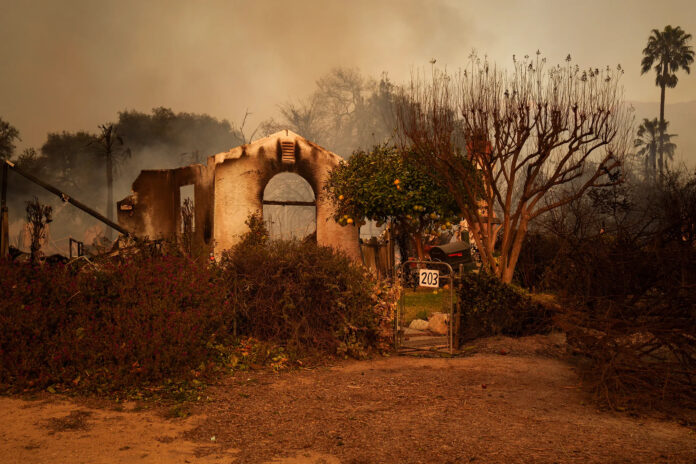The FAIR Plan assessment is the latest insurance fallout from the LA fires. State Farm, California’s largest property insurance provider, recently asked for permission to temporarily raise its premiums an average of 22 percent because of the claims it is facing from the fires. The insurance department is still considering that request.
The FAIR Plan’s president, Victoria Roach, had been warning about its ability to pay claims in case of catastrophe, telling a state Assembly committee last year that the plan “one event away from a large assessment.”
As of Feb. 9, the plan had paid more than $900 million in claims, the commissioner’s order said. “A $1 billion assessment puts the FAIR Plan at an estimated cash position of just under $400 million by July 2025, as the 2025 wildfire season is just beginning,” Roach told the insurance department in the plan’s request for the assessment.
Insurance companies will need to submit filings with the insurance department before they can collect the one-time fees from their customers, said Michael Soller, department spokesperson.
It is unclear on what percentage of policyholders’ premiums the fees will be based.
“The FAIR Plan does not have a role in determining how insurers manage costs associated once an assessment is approved,” the plan said in a press release.
Under new regulations that took effect this year as part of Insurance Commissioner Ricardo Lara’s effort to address the growing difficulty of finding property insurance in California, insurance customers will now have to shoulder 50 percent of any assessment through a temporary fee added to their premiums. Before the new rules went into effect, the plan would have gotten all the additional funds directly from its member companies, which would have then tried to recoup that money by raising premiums.
The insurance industry supports the change. “This is essential to prevent even greater strain on California’s already unbalanced insurance market and avoiding widespread policy cancellations that would jeopardize coverage for millions of Californians,” said Mark Sektnan, vice president for state government relations for the American Property Casualty Insurance Association, in a written statement.
But Consumer Watchdog, a consumer advocacy group, is considering suing over the fact that consumers are now on the hook for the additional funding for the FAIR Plan, which its executive director calls a “bailout.”
“We’ll be exploring every legal option to protect (consumers) from those surcharges,” Carmen Balber told CalMatters.
Balber added that some insurers, such as Mercury General Corp., said shortly after the L.A. fires began in early January that they expected to have adequate reinsurance to cover any possible increased contributions they would have to make to the FAIR Plan. In that case, “are they going to let insurers double dip and charge consumers (anyway)?” Balber asked.
The insurance department said the last time the state approved additional funds for the FAIR Plan was in 1993, after the Kinneloa Fire in Altadena and the Old Topanga Fire in Malibu and Topanga. Some of those areas were also affected by the fires this year. The additional funds approved then are equivalent to $563 million today, the department said.
In a statement, Lara characterized the new regulation as a “necessary consumer protection action.” The commissioner added: “The fact that we are once again facing this issue 30 years after wildfires devastated these same communities highlights the need for change.”
For the record: An earlier version of this story misstated how the FAIR Plan assessment will be charged to consumers. It will be passed along by insurance companies, not charged by the FAIR Plan.



